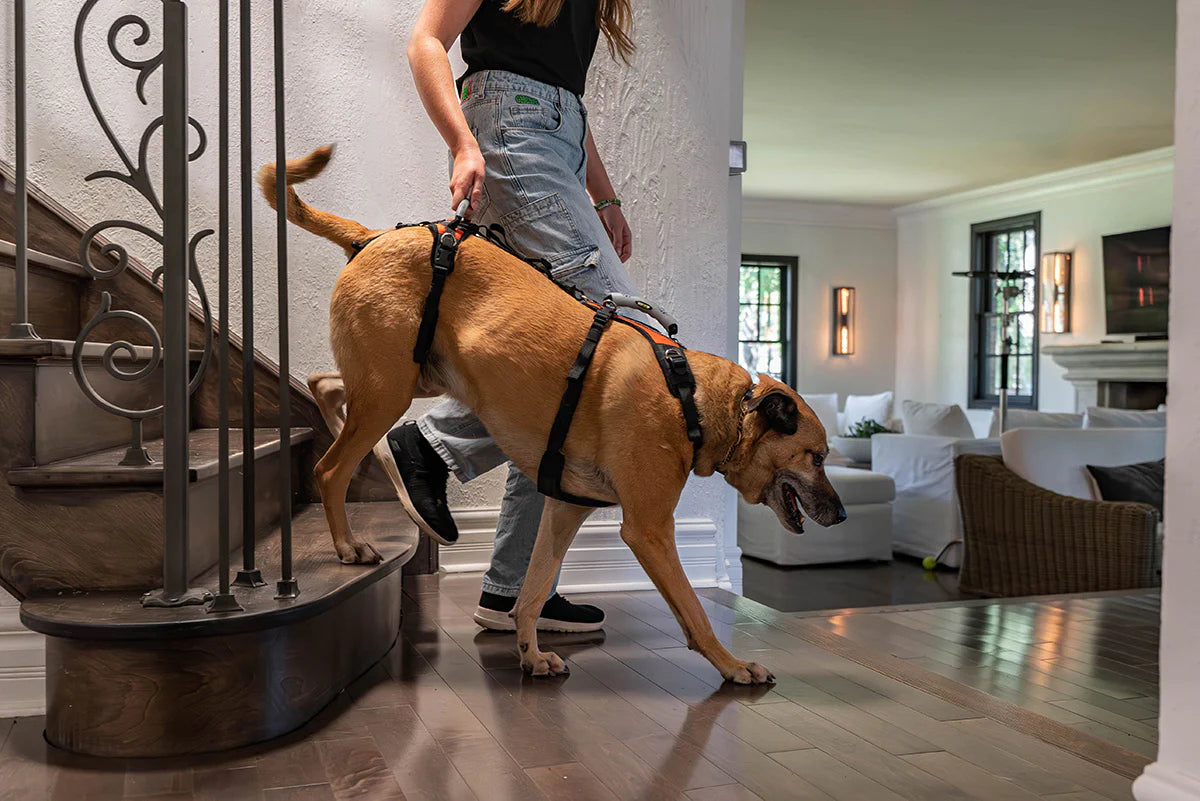Nursing Care

Nursing care for mobility impaired pets is an extremely important part of your day as we are well aware.
Over the past 50 years we have gained a large knowledge base for the care of your pet and we are happy to help you in anyway possible.
Bladder Care & Urinary Health
Preventative bladder care plays a critical part in the health of your pet. If your pet has suffered nerve damage to the hindquarters, paralysis, or stroke, your pet’s bladder must be expressed at least three times daily. If you do not know how to do this, have your veterinarian show you. Mobility impaired pets are subject to “pooling” or partial urine retention. Often when you find your pets bed wet, it does not mean that it is urinating on its own, but that the bladder has become so full that there is an overflow.
Due to nerve injury to the hindquarters, paralysis, or stroke, cystitis or bladder infection is one of the greatest threats to your pet’s health. Such infections are very serious and could lead to death in a matter of days if left untreated. This applies whether your pet is totally paralyzed, partially paralyzed, or walking.
Signs of a Urinary Tract Infection Include:
- Dribbling or evidence of urine, such as soaking of the rear quarters and bedding.
- Foul odor of urine, and an increased licking of the genital area as infections worsens.
- Bloody or dark colored urine. This is a severe symptom and requires immediate veterinary care!
- Depression, loss of appetite, rise in temperature as infection progresses.
Treatment of Urinary Tract Infection
Due to the insidious nature and frequency of this type of infection, prophylactic medical treatment, before signs of infection occur, offers the best solution. The cooperation of your veterinarian in prescribing the best medication, monitoring pH, culturing the urine, and providing instruction on expressing or clearing the bladder of pooled urine is essential for successful nursing care. Urine retained in the bladder can become a medium for bacterial growth.
Proper Bedding
Confining your pet to an area where there is plenty of soft bedding, when not in its cart or Protect-A-Pet, is important to keep your pet from dragging itself around as this will help prevent pressure sores. It is also crucial to your pet’s health and recovery. If given a choice, most pets will choose a hard, cool surface over a soft, padded area to rest on. This makes your handicapped pet more susceptible to developing Decubital, or pressure, sores. See our Canine Cooler pet bed; it provides a solution. It keeps your pet cool and helps to prevent pressure sores.
We have found the following guidelines to be helpful:
- We recommend the Canine Cooler pet waterbed. This bed is ideal for pets that get hot easily and seek out a cold surface to lie on. Cool surfaces are often hard surfaces; and for a mobility impaired pet, lying on a hard surface makes it more susceptible to pressure sores and hygromas (elbows sores).
- Do not allow your handicapped pet to lie continually on one side. Turn it over regularly. For pets with forelimb weakness, or rear limb problems, it is sometimes better to prop them up in sternal recumbency (on abdomen with front legs extended and hind legs tucked up underneath) using rolled up blankets on either side of their body with their head resting on a rolled up towel.
- Do not allow your pet to drag around, unprotected, over any hard surface as this will cause pressure sores. Once established, these sores are difficult to heal.
Regular Bathing
Regular bathing will maintain your handicapped pet’s hair, coat and skin in healthy condition and prevent sores. Your pet’s hindquarters must be gently bathed, at least once daily, with warm water and a soft, clean washcloth. If your pet has an excessive amount of hair, you may want to clip the rear area for sanitary reasons, ease of care, and to keep the area clean.
Pressure Sores
Pressure sores can be extremely serious and, if not caught in time, can open right down to the bone. Prevention is the best answer. Proper bedding (see our Canine Cooler pet bed), regular bathing, and use of a K9 handicap pet wheelchair will also help prevent pressure sores.
Pets should be checked every day for pressure sores as they can be hidden underneath the hair; be particularly watchful with long-haired pets as the sores can be hidden in the coat. Check your pet’s hips and elbows for sores if it has a tendency to lie on one side. If your handicapped pet continually lies on its side, we suggest placing it in a sternal recumbency (on abdomen with the front legs extended and rear legs tucked underneath). You will also need to place a blanket on each side and one under the head to keep your handicapped pet propped up.
If your pet does incur pressure sores, visit your veterinarian immediately. Your veterinarian will probably clip and clean the area and advise you on proper care of pressure sores.








